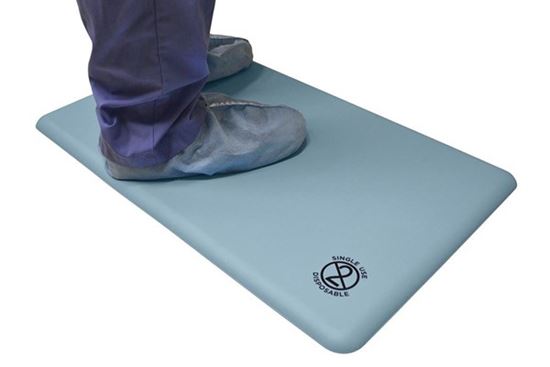-
Home
-
Surgical Mats: Supporting Surgeons Every Step of the Way
Surgical Mats: Supporting Surgeons Every Step of the Way
December 11, 2024
 Operating rooms are the epicenter of a hospital, where skilled professionals dedicate long hours to saving lives. Surgeons, nurses, and technicians often spend extended periods standing on hard floors, performing intricate procedures. Over time, this physical strain can lead to discomfort, fatigue, and long-term health issues. The use of surgical mats offers a practical solution, promoting the well-being of operating room teams while improving their performance.
Operating rooms are the epicenter of a hospital, where skilled professionals dedicate long hours to saving lives. Surgeons, nurses, and technicians often spend extended periods standing on hard floors, performing intricate procedures. Over time, this physical strain can lead to discomfort, fatigue, and long-term health issues. The use of surgical mats offers a practical solution, promoting the well-being of operating room teams while improving their performance.
The Challenges of Standing for Hours in the O.R.
Standing for extended periods on hard surfaces might seem like a minor inconvenience, but the consequences can be significant. Hard floors hinder blood circulation, causing swelling, fatigue, and chronic pain in the back, neck, and legs. These issues can escalate to more severe problems, such as varicose veins, spinal issues, and musculoskeletal injuries that compromise posture and mobility.
Additionally, standing-related discomfort can reduce a surgical team's focus—an unacceptable risk in the high-stakes environment of the operating room. The use of anti-fatigue mats helps reduce these workplace hazards, supporting the health and productivity of the surgical staff.
Proven Benefits of Anti-Fatigue Mats
Numerous scientific studies underline the critical role of surgical mats in improving the working conditions of medical professionals. By offering ergonomic support, studies show that these mats reduce the physical toll of prolonged standing.
- Texas A&M Study: Research on surgeons using different kinds of floor mats revealed that gel mats reduced spinal compression by nearly 40%. Surgeons retained 300% more flexibility when using gel mats compared to standing directly on hard floors.
- International Journal of Occupational Medicine and Environmental Health: This study highlights how anti-fatigue mats significantly reduce lower back pain. Participants consistently expressed a preference for working with the mats rather than standing on bare floors.
- Journal of Urology Study: An evaluation of surgical laparoscopy teams found that the absence of supportive mats led to frequent breaks due to pain and fatigue. Those using gel mats reported reduced foot, knee, and back pain, greater energy, and enhanced overall comfort during operations.
Why Anti Fatigue Mats are a Long-Term Healthcare Investment
Incorporating floor mats into operating rooms brings both immediate and lasting benefits. By minimizing strain and injury risks, these ergonomic solutions help medical teams stay healthier, reduce downtime, and maintain higher productivity levels. Enhanced circulation, improved posture, and increased energy ensure that healthcare professionals can focus on delivering top-quality patient care.
Additionally, these mats help preserve valuable resources within healthcare systems. With fewer health problems related to long hours of standing, employers can expect reduced absenteeism and higher morale amongst staff. Over time, the cumulative effects of ergonomic solutions amplify both staff satisfaction and patient care quality.
Investing in the Health of Caregivers
Operating room teams are indispensable in the pursuit of better patient outcomes. Supporting their health and comfort is more than a courtesy—it’s a responsibility. Anti-fatigue mats represent a simple yet profoundly effective way to reduce the physical toll of their work, providing a safer and more ergonomic environment.
From reusable surgical anti-fatigue mats to innovative disposable gel standing pads, there is a wide array of options when it comes to enhancing the operating room experience. These small but significant upgrades ensure surgeons and their teams can perform at their best, every step of the way. By prioritizing their health, hospitals pave the way for better surgical outcomes and strengthened workforce resilience.
You may also be interested in: